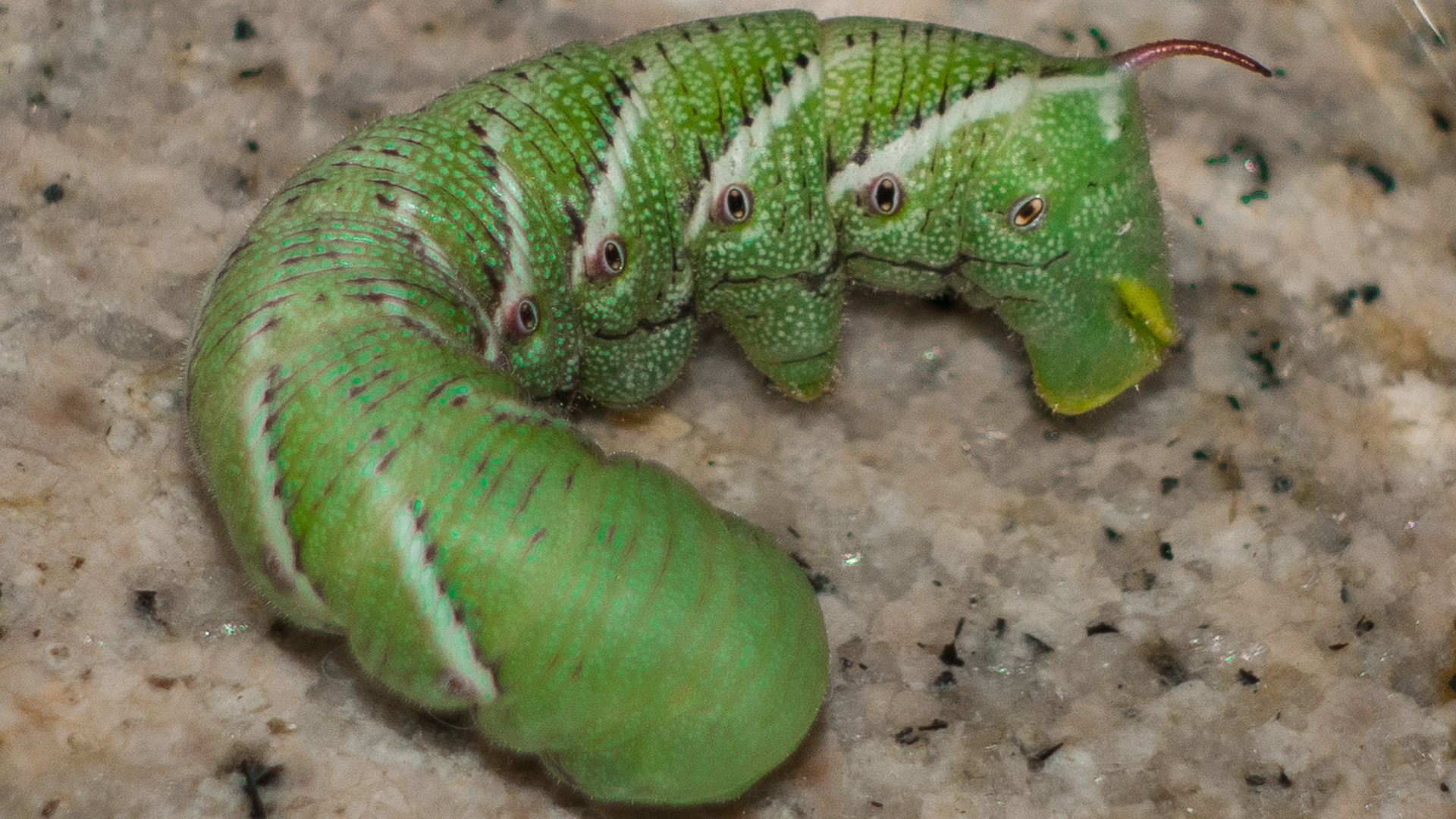When most animals are hurt, they lash out or run away. It’s the classic fight-or-flight response. However, the tobacco hornworm caterpillar (Manduca sexta) has a very different strategy.
When disturbed or in pain, it goes still, curling its head and upper body downward in a pose that researchers call the sphinx state, since it looks like the ancient Egyptian statue.
Scientists have now discovered that this isn’t just a freeze response. The caterpillar is actually processing pain in this state, a finding that challenges what we thought we knew about how simple brains handle pain.
“Our study is the first to characterize it as a behavioural state with associated physiological modulations. We show that this is a reversible, quiescent state that caterpillars assume when they experience mechanical disturbance in their surroundings,” the study authors note.
This unusual caterpillar behavior reveals new insights about how animals process pain and could even help scientists rethink pest control and human pain relief.
Decoding the pain processing mechanism
Scientists at Tufts University wanted to know how tobacco hornworm caterpillars react when they feel pain or discomfort. Normally, animals respond through a reflex called nociception, an automatic response to painful stimuli.
For example, if you touch something hot, you pull your hand back before your brain even registers the pain. Researchers thought insects would behave the same way, and they performed a series of experiments with 20 tobacco hornworm caterpillars. However, the caterpillars surprised them.
They gently stroked the caterpillars with a paintbrush, tapped on the surface where they were resting, and even moved the material under them. Each time, the caterpillars tucked their head and thorax downward and froze in the sphinx position.
The researchers then checked how this posture affected pain responses. When they applied heat to different parts of the caterpillars’ bodies, the insects showed less sensitivity than they normally would. To dig deeper, the scientists wanted to know whether the sphinx state was just a reflex or a conscious choice.
They performed surgery on the insects’ cerebral ganglion, a brain structure that controls movement and processes sensory information. Their experiments revealed that this part of the brain could not trigger the sphinx state on its own.
Instead, the behavior seemed to be actively chosen by the caterpillars, showing that they were not just passively reacting to pain but deliberately dampening their response.
“When they were separated from external mechanosensory stimuli for 24 hours, none of the 20 larvae entered the sphinx state. Instead, they were only observed engaging in crawling, feeding, and defecating. This suggests that the sphinx state is an ‘evoked’ response that is initiated on sensing an external stimulus,” the study authors said.
“This discovery reveals a novel instance of active behavioural modulation in insects and highlights the flexibility of nociceptive responses, challenging the notion of nociception as strictly hard-wired and stereotyped,” they added.
Why does the knowledge of such behavior matter?
The humble caterpillar has taught science a big lesson. Pain isn’t always about fight or flight; sometimes, it’s about staying still and choosing silence.
These findings could have various implications. For example, in the case of pest management, understanding how insects actively control their defensive behaviors could lead to smarter and safer ways to manage crop pests without relying solely on harmful pesticides.
The research also offers a window into the biology of pain. While the human brain is far more complex, studying a simple nervous system like that of the caterpillar allows researchers to pinpoint how decisions about pain suppression are made.
This could lead to novel ideas for developing new kinds of pain relief in humans, especially for conditions where the nervous system amplifies pain signals unnecessarily. The Tufts team now plans to explore how widespread this behavior is in the insect world and to trace the exact neural circuits responsible.
The study is published in the journal Biology Letters.
